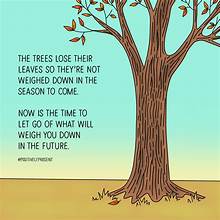Like many writers, there are several ideas for stories, articles, and columns bouncing around in my head all the time. Sometimes there are so many that it overwhelms the decision-making process for which one will rise to the top. That was the situation I found myself in when I sat down to work on this week’s blog post. And, as fate may have it, inspiration for the idea that made it to the top came from a phone call from a person I worked with 30 years ago, a person who served as my immediate supervisor, and a person with whom I have stayed in touch over those 30 years.
Thirty years ago, I had the privilege and pleasure to work with Dr. David Sam (who is currently the president of Elgin Community College in Elgin, Illinois). We both moved on to pursue other post-secondary administrative positions at the same time. We follow the personal and professional lives of each other. So, it was no surprise to see Dr. Sam’s name appear on the incoming phone call.
What was a surprise was hearing a note of sadness in his voice, a sadness brought on by his wife having lost her battle with cancer. My heart just ached and my eyes glistened with tears as he shared the news. And, now, like those close to the Sam family, I am grieving her passing and I am grieving for Dr. Sam and his loss.
We all know that grieving is a very personal process. There are stages, and processes, and tasks that accompany the grieving process. And the amount of time it takes to work through those stages, processes, and tasks varies greatly person to person. Common to all who are grieving any loss is having to say, in this life, that final goodbye to someone much loved.
Goodbye is a conventional expression used at parting. It is a ritual, something done in a particular situation and usually in the same manner each time. Saying goodbye is a routine that has meaning. Saying goodbye, no matter the situation, helps us move on emotionally. Goodbyes help lessen the pain we feel over someone’s departure, whether that departure is temporary (saying goodbye to a friend who is returning home after a visit) or permanent (saying goodbye to someone who has passed away). Goodbyes help strengthen the connection, the bond, we all feel with whomever has moved on.
No one ever said that goodbyes are easy. In fact, they are hard and they take courage because they do signify the loss of someone or something. As Charlie Brown (a character in the comic strip Peanuts created by Charles M. Schulz) said, “Goodbye always makes my throat hurt.” Indeed. Goodbyes, no matter the situation, can make not only our throat hurt, but our heart (from the ache of the loss) and our eyes (from the many tears that we shed). But, saying goodbye is important when dealing with loss because it:
Gives us a sense of peace. Prior to a loss, we are usually an “emotional mess.” Saying goodbye brings a measure of freedom from being an “emotional mess” and allows us to move forth in a more tranquil manner.
Provides a sense of closure. It does help with identifying the need to let go and move on.
Helps lessen pain. Just the action of saying goodbye is cathartic. Many goodbyes are accompanied by hugs which always seem to help no matter what the situation.
Strengthens connections with friends and family. Dr. Samuel Mahaffy in a blog post on “Lingering in Relational Presence: The Value of a Good ‘Good-by” says, “Good good-byes are relationship affirming. They say ‘yes’ to that which endures and grows when we are apart. By saying a good good-bye we affirm relational presence in our absence from each other. Just as being present to each other is an art, so is saying good-bye well.”
Shows that we valued someone. The care, concern, and role the person had in our life is acknowledged when we say farewell.
Signifies the start of something new; something different. While we may not have asked for the new or the different, a goodbye reaffirms something has ended and that we need to move on without that person’s physical presence, but instead, with warm and wonderful memories.
American novelist and nonfiction writer Katharine Weber has an interesting take on our life journey: “Life seems sometimes like nothing more than a series of losses, from beginning to end. That’s the given. How you respond to those losses, what you make of what’s left, that’s the part you have to make up as you go.” Indeed, how we respond to the losses in our life and what we make of what’s left is a challenge for all of us.
I have found that saying goodbye helps us deal with the challenge of what is left. We mourn what was and yes, we often have a tough time envisioning what will be. But, we move on because our life journey continues to move on. The path of that journey has undoubtedly changed and where it will now lead, we don’t know. We can be sure that there will be more changes along the way. More tears of sadness. But, beyond the tears of sadness there is a new beginning with new possibilities. And with self-patience and self-kindness, we will eventually see the possibilities in that new beginning.



































































